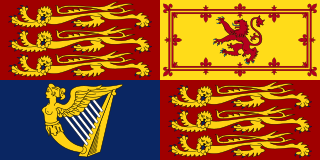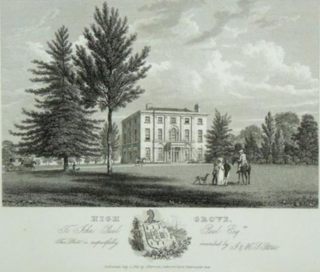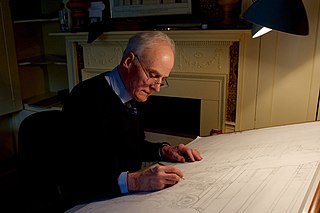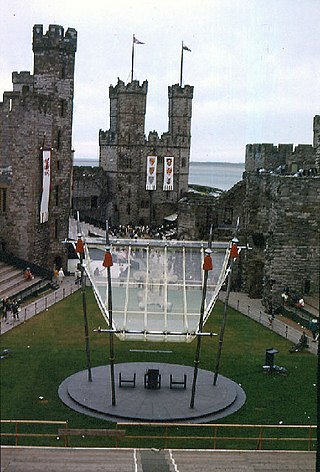
Prince of Wales is a title traditionally given to the male heir apparent to the English, and later British, throne. The title originated with the Welsh rulers of Gwynedd who, from the late 12th century, used it to assert their supremacy over the other Welsh rulers. However, to mark the finalisation of his conquest of Wales, in 1301, Edward I of England invested his son Edward of Caernarfon with the title, thereby beginning the tradition of giving the title to the heir apparent when he was the monarch's son or grandson. The title was later claimed by the leader of a Welsh rebellion, Owain Glyndŵr, from 1400 until 1415.
The British royal family comprises King Charles III and his close relations. There is no strict legal or formal definition of who is or is not a member, although the Royal Household has issued different lists outlining who is a part of the royal family. Members often support the monarch in undertaking public engagements, and pursue charitable work and interests. Members of the royal family are regarded as British and world cultural icons.

Charles III is King of the United Kingdom and the 14 other Commonwealth realms.

The Castle of Mey is located in Caithness, on the north coast of Scotland, about 6 miles (10 km) west of John o' Groats. In fine weather there are views from the castle north to the Orkney Islands.

The royal standards of the United Kingdom presently refer to either of two similar flags used by King Charles III in his capacity as sovereign of the United Kingdom, the Crown dependencies, and the British Overseas Territories. Two versions of the flag exist, one for use within Scotland and the other for use elsewhere.

Poundbury is an experimental urban extension on the western outskirts of Dorchester in the county of Dorset, England. The development is led by the Duchy of Cornwall, and had the keen endorsement of King Charles III when he was Prince of Wales and Duke of Cornwall. Under the direction of its lead architect and planner Léon Krier, its design is based on traditional architecture and New Urbanist philosophy. The 2021 census showed a population of 4,100.

Highgrove House was the family residence of King Charles III and Queen Camilla. It lies southwest of Tetbury in Gloucestershire, England. Built in the late 18th century, Highgrove and its estate were owned by various families until it was purchased in 1980 by the Duchy of Cornwall from Maurice Macmillan. Charles III remodelled the Georgian house with neo-classical additions in 1987. The duchy manages the estate and the nearby Duchy Home Farm.
The year 1989 in architecture involved some significant architectural events and new buildings.
The year 1984 in architecture involved some significant architectural events and new buildings.

The Welsh National Temple of Peace and Health, known as the Temple of Peace and Health or commonly the Temple of Peace, is a non-religious civic building in Cathays Park, Cardiff, the capital city of Wales. It was designed by the architect Sir Percy Thomas. Since its foundation, the building has served a dual function as headquarters for health and international affairs organisations.

Kew Palace is a British royal palace within the grounds of Kew Gardens on the banks of the River Thames. Originally a large complex, few elements of it survive. Dating to 1631 but built atop the undercroft of an earlier building, the main survivor is known as the Dutch House. Its royal occupation lasted from around 1728 until 1818, with a final short-lived occupation in 1844. The Dutch House is Grade I listed, and open to visitors. It is cared for by an independent charity, Historic Royal Palaces, which receives no funding from the government or the Crown. Alongside the Dutch House is a part of its 18th-century service wing, whilst nearby are a former housekeeper's cottage, brewhouse and kitchen block – most of these buildings are private, though the kitchens are open to the public. These kitchens, the Great Pagoda and Queen Charlotte's Cottage are also run by Historic Royal Palaces.

John Quinlan Terry CBE is a British architect. He was educated at Bryanston School and the Architectural Association School of Architecture. He was a pupil of architect Raymond Erith, with whom he formed the partnership Erith & Terry.
The King's Foundation is an educational charity established in 1986 by King Charles III to teach and demonstrate in practice those principles of traditional urban design and architecture which put people and the communities of which they are part at the centre of the design process.

David John Watkin, FRIBA FSA was a British architectural historian. He was an emeritus fellow of Peterhouse, Cambridge, and professor emeritus of History of Architecture in the Department of History of Art at the University of Cambridge. He also taught at the Prince of Wales's Institute of Architecture.

The bibliography of Charles III, King of the United Kingdom and 14 other Commonwealth Realms, is a list of approximately three dozen works which the King has written, co-written, illustrated or narrated, and includes works for which he has written a foreword, introduction or preface.

The Prince of Wales is sometimes presented and invested with the insignia of his rank and dignity in the manner of a coronation. The title is usually given to the heir apparent of the English or British throne. An investiture is ceremonial, as the title is formally conferred via letters patent issued by the monarch.

New Classical architecture, New Classicism or Contemporary Classical architecture is a contemporary movement in architecture that continues the practice of Classical architecture. It is sometimes considered the modern continuation of Neoclassical architecture, even though other styles might be cited as well, such as Gothic, Baroque, Renaissance or even non-Western styles – often referenced and recreated from a postmodern perspective as opposed to being strict revival styles.

The "black spider" memos are letters and memorandums written by Charles III of the United Kingdom, during his tenure as Prince of Wales, to British government ministers and politicians over several years. As the modern British monarch remains politically neutral by convention, the letters were controversial because of Charles' then-position as eldest child of the British monarch Queen Elizabeth II and heir apparent to the British throne.
James St Clair Wade is a British architect. He was educated at Shrewsbury School, and was a scholar at St John's College, Cambridge before attending Harvard University.
Charles R: The Making of a Monarch is a 2023 television documentary film of home movies shot by the British royal family of Charles III throughout the seven decades of his life. The film aired on BBC One and BBC iPlayer on 30 April 2023 ahead of Charles's coronation. The programme is narrated by Charles himself, who elaborates on events from his childhood, military service, family life, and public life. The film contains unseen personal moments as well as footage from the 1969 documentary Royal Family, including unseen footage from the out-takes.














